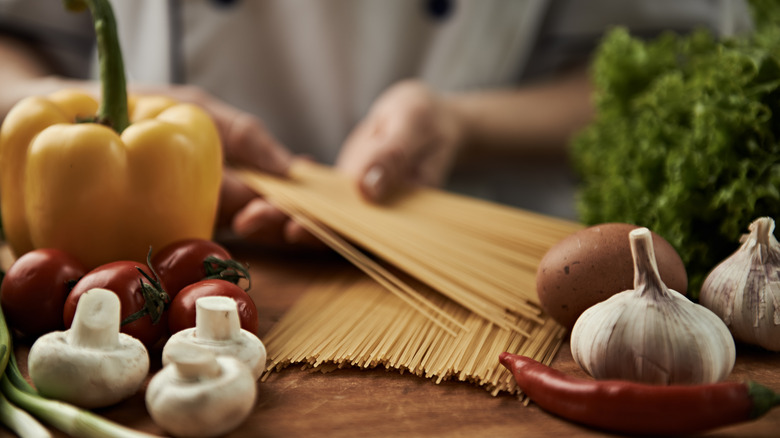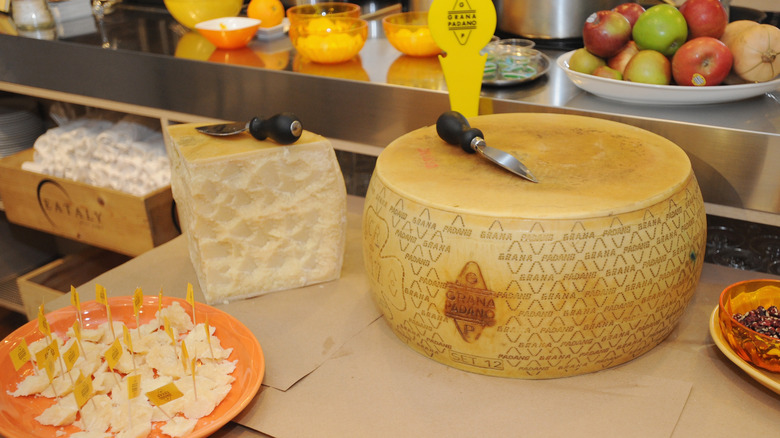What Joe Bastianich Wishes Americans Knew About Italian Food - Exclusive
Any cuisine is bound to be influenced when brought to a new location. The Chinese food served in a restaurant in Charlotte, North Carolina is likely going to be different than that served in a restaurant in Shanghai. A corner bistro in Paris offers different fare than an Au Bon Pain in Pittsburgh. The spices found in an Indian dish in New Hampshire may not perfectly mirror those of the same dish in New Delhi.
Now, for the record, we know that China is home to dozens of different cuisines within its borders, that French food is not defined by what you find in a café, and that Indian food is fantastically varied. The same is true for the food of all nations, as are the common misconceptions many people hold about international cuisine.
This is even true of foods many Americans think they know well, such as Italian cuisine. In fact, there are quite a few misconceptions about Italian food. And if anyone knows what they are, it's Joe Bastianich, restaurateur, MasterChef judge, and co-owner of the global grocery chain Eataly. An Italian-American himself, he grew up working in his parents' Italian restaurant in New York City (via Joe Bastianich, Fine Dining Lovers). When Mashed caught up with Bastianich for an exclusive interview, he had more than a few things to say about Italian cooking.
Italian-American food is its own cuisine, according to Bastianich
If you go to an Italian restaurant in the States, most of the time the food you are eating should more accurately be termed Italian-American, according to Joe Bastianich. He told Mashed: "I think there is an Italian-American food that exists in this country that is an evolution of Italian food. People think that that's what people eat in Italy and that's wrong."
One of the major things people get wrong here about what they cook and eat over there? The sheer amount of garlic we associate with Italian cooking, said Bastianich. "I think the amount of garlic people perceive that's in Italian food is [too much]. I think garlic is very gingerly or lightly used in Italy as a seasoning, not as a major flavor component. I think those are the two big misconceptions."
We're also getting it wrong when it comes to pasta, he said. "[It's] the basic techniques with pasta. Whether it be not enough salt in the water, rinsing the pasta with water afterwards, not cooking the pasta with the sauce. I think that is a very, very common mistake that we try to correct."
Mozzarella is not the only important Italian cheese
If when you think of Italian cheese and only mozzarella or parmesan come to mind, you are missing out on the variety that Joe Bastianich feels is the most iconic.
"If you go to Italy, Grana Padano is in the kitchen of every household," he said. "It's used as an eating cheese for its taste and nutritional content, as a grating cheese, as a cooking cheese. It's the everyday cheese that Italians really use [and] that sets Italian food apart." Grana Padano is a grainy and fruity cheese made from unpasteurized cow's milk (via Cheese.com) that is registered with a Protected Designation of Origin.
"Having a piece of Grana Padano in your fridge at home will elevate everything you do," Bastianich explained. "Whether you're going to do some asparagus, if you're going to add it to a crusting on a chicken breast, if you're going to obviously make pasta risotto, or just eat it for its nutritional value. It's really one of the basics, like olive oil, San Marzano tomatoes, and balsamic vinegar, it's the basic building block of Italian cuisine."
If you want to elevate your dishes like Joe Bastianich, you can learn more about Grana Padano on their website. Follow along on Instagram to get the latest recipes and news about the exclusive Italian cheese.


